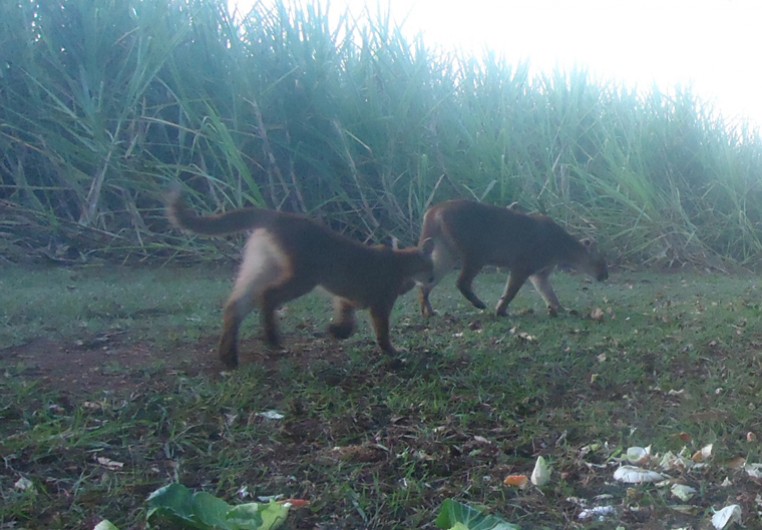Biodiversity
< Back

 Puma
Puma concolor | Linnaeus, 1771
Puma
Puma concolor | Linnaeus, 1771

PHOTO: Property of Native / Embrapa
Characteristics: Second largest feline species in Brazil, reaching 170cm in length. Its tail is also long, and can measure up to 61.5cm. Its color varies from grayish-brown to dark reddish-brown, except for a lighter-colored chest. Young pumas have a few black spots.
Distribution: From western Canada to the Southern tip of South America, including Brazil (not found in densely populated areas).
Habitat: Tropical and subtropical forests, "caatinga" scrublands, savanna, and wetlands.
Habits: Lonely, terrestrial species with diurnal and nocturnal habits.
Diet: Carnivorous, feeding exclusively on mammals (from rodents to cattle).
Breeding: The gestation period lasts 84 to 98 days, with 1-6 cubs being born.
In the UFRA area: The puma showed little spatial distribution. It was only found in the floodplains with herbaceous plants and in native forests. An infrequent species, as it was identified only four times. It is a species of great ecological value, which is threatened with extinction, ranked in the Vulnerable category by the scientific community.













